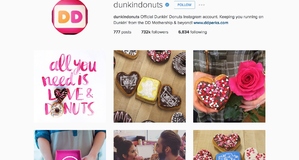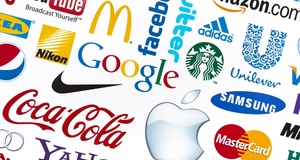From Elon Journal of Undergraduate Research in Communications VOL. 6 NO. 1How Luxury Fashion Brands Utilize YouTube to Engage Consumers and Promote Brand Identity
IN THIS ARTICLE
KEYWORDS
AbstractAs the world becomes more technologically advanced, the demand for two-way communication between brand and consumer has become stronger. This study tried to develop a relationship between the rise in new media and luxury brands by content analyzing Chanel, Dior, and Burberry’s YouTube channels that aims to categorize their video content into the following three categories: musical performances, historical narratives, and behind-the-scenes footage. The study found that as social media becomes more prevalent in today’s society, these three luxury brands are steering away from brand advertisements and now promoting brand entertainment to engage consumers. Companies across all industries can utilize these findings to create advertising content that is entertaining, which will help them better reach their target consumer. I. IntroductionThe rise of new media has significantly shaped how society shares and receives information. Companies are now looking to social media as a means to engage and communicate with their target consumers. Online applications, such as Facebook, Twitter, Youtube, and Instagram, are taking over the social media world. As the traditional communication tactics of print media and pure word of mouth are slowly enfeebled, more and more companies are turning to social media to spread news about their company in an entertaining and engaging format. This study focused on how luxury fashion brands are utilizing YouTube to communicate with high fashion consumers. According to Reyneke (2011), not only do luxury brands have a unique customer base with a set of specific characteristics, but they are also defined by a unique set of features: “luxury brands evoke exclusivity," “they have a well known identity,” “they enjoy high brand awareness and perceived quality,” “they retain sales levels and customer loyalty” (Reyneke, 2011) A recent article published in The Wall Street Journal supports the belief that luxury fashion companies are turning to YouTube to market their brand (Shields, 2014). A study by OpenSlate, a YouTube brand analytics company, revealed that the top three most influential luxury fashion brands on YouTube are (1) Chanel, (2) Dior, and (3) Burberry (see Figure 1). This research examined how the three brands utilize YouTube to engage with consumers. This study discussed what communication strategies these companies are using in terms of brand entertainment to connect with their audiences via YouTube. Figure 1. OpenSlate Study on Luxury Fashion Brands and YouTube (SlateScore is out of 10 total points) II. BackgroundTo understand the impact that YouTube has had on how consumers now engage with their favorite brands, an individual must consider how drastically the demand for these interactive and entertaining social media platforms has grown over the past decade. YouTube was started in 2005 with few followers as one of the many websites that introduced video sharing (Burgess & Green, 2009). The creators of YouTube–Chad Hurley, Steve Chen, and Jawed Karim– aimed to create a video-sharing interface that was extremely user-friendly for consumers with little to no technological knowledge. A year after it was launched, Google bought YouTube in 2006 for $1.65 billion dollars. According to Burgess & Green (2009), just three years after its launch, website and data analytics companies deemed YouTube to be one of the top ten most consistently visited websites around the world. Today, You- Tube is the second-most searched website in the world (Qualman, 2013). According to YouTube’s “Statistics” page, more than 1 billion users visit YouTube each month (“Statistics”). The popularity of YouTube spread like wildfire due to its user-friendly interface and its ability to spread news in an entertaining format. Because it is so expensive to run commercials on television, companies rely on YouTube as a way to release video content for their target consumers and get people conversing about their brand (Burgess & Green, 2009). In terms of luxury brands, YouTube is a platform where companies like Chanel, Dior, and Burberry can post videos under the advertising strategy of brand entertainment that help build a special relationship between the company and the luxury consumer. The luxury market is now in the maturity stage of the business life cycle, according to Kim and Ko (2010). They suggest that this stage is characterized by the ability to cater to a wide variety of consumers and a significant increase in the number of consumers. With the combination of platforms such as YouTube and the success of the luxury market, these brands have turned to brand entertainment to reach the consumer. This term, which is also referred to as “Madison and Vine,” is defined as “a reference to continually converging advertising and entertainment coined from the names of two renowned avenues that represent the two industries, respectively,” (O’Guinn, Allen, Semenik, & Close, 2012, p. 213). This marketing communications vehicle has resulted in a shift in how brands are choosing to market their product. The author investigated how Chanel, Dior, and Burberry have utilized YouTube and brand entertainment to communicate, engage, and build long-term relationships with their consumers. III. Literature ReviewAlthough social media marketing and the luxury consumer have been researched separately, the direct relationship between both was rarely studied, especially between the platform of YouTube and luxury brands. The author examined studies that have examined social media marketing, YouTube/Web 2.0, luxury brands, and the luxury consumer. Understanding Social Media MarketingA study performed by Kim & Ko (2010) analyzed the use of social media marketing (SMM) and the impact it has on luxury consumers and overall brand equity. They specifically studied Louis Vuitton’s social media platforms and measured their content against five separate categories related to social media marketing. The categories included “entertainment, interaction, trendiness, customization, and word of mouth” (Kim & Ko, 2010, p. 3). The study focused on how SMM affects specifically customer equity and the overall intent to purchase a luxury brand product after their social media marketing is viewed. Through an in-depth study of Louis Vuitton’s social media, these two authors found that SMM has an extremely positive effect on luxury brands. The results of this study uncover the following: Luxury brand’s SMM entertains customers because it is free and allows them to choose what information the consumer wants to process. SMM allows for luxury brands to create interactive content that is often passed on through word-ofmouth. SMM goes deeper than typical marketing as it focuses on making the consumer aware of the values of the brand and its products. Luxury brands focus their SMM on more “hedonic and empirical values that can be reached by indirect brand experience” (Kim & Ko, 2010, p.1) Kim & Ko concluded that a luxury brand’s social communications positively impacts the consumer because it attempts to reach the customer in a way that is unique and more personal. Another study published in the Life Science Journal explained that companies that do not have a social media strategy will not survive in the new, more digitally focused society of today (Saravanakumar & Lakshmi, 2012). The authors stated that this increase in social media has drastically changed how companies communicate with consumers because it has allowed them to “intensify” their engagement. Unlike Kim & Ko’s study (2010), Saravanakumar & Lakshmi (2012) found that while SMM lets the corporation correspond with the consumer, it also allows for the consumer to communicate with the company. This open form of two-way communication allows for customers to communicate with the company and vice versa. This has many implications for companies, as their SMM strategy must be consistent with their brand identity. Understanding YouTube and Web 2.0Thackeray, Neiger, Hanson, and McKenzie (2008) chose to focus on how YouTube is an effective way for these brands to communicate and engage with their target audience. This study examined how brands can enhance promotional strategies through Web 2.0 and social media. Web 2.0 goes beyond the one-way communication of Web 1.0, allowing users to engage with the media through commenting, sharing, liking, etc. The study concluded that brands should use Web 2.0 to communicate with their consumers for two reasons. The first is that marketing via social media platforms allows the consumer to engage with the brand instead of passively a company’s marketing efforts (Thackeray, Neiger, Hanson, & McKenzie, 2008). This makes consumers feel that they have a more personal relationship with the company. Second, marketing via Web 2.0 allows for a marketing message to spread more rapidly because it sparks word-of-mouth marketing. For example, Chanel published a short video for the No. 5 fragrance on their YouTube channel, entitled “The One that I Want,” starring model Giselle Bündchen. Due to social media marketing and word-of-mouth effect, it had nearly 4.3 million hits on YouTube in just over two weeks. Although this study focused on applying aspects of Web 2.0 to health practitioners, the same idea can be applied to any brand in any field since it can benefit from incorporating social media marketing into its promotional tactics. As the world becomes more technologically advanced, the demand for two-way communication between brand and consumer becomes stronger. A similar study published by Cormode & Krishnamurthy (2008), which compared and contrasted Web 1.0 and Web 2.0 to identify key differences between the two, showed how marketers can adapt to this new form of two-way communication. According to them, the consumer solely acted as a passive consumer in Web 1.0, whereas in Web 2.0, any individual is able to create, post, and share content that he or she has created. Figure 2 depicts the paths in which content travels from the creator to the consumer in Web 2.0. You- Tube is shown as the least intrusive way to distribute macro-content from the content creator to the content consumer. Luxury Brands and the Luxury Brand MarketAs discussed earlier, luxury brands are defined by being exclusive and well known, having high brand awareness, and maintaining consistent loyalty among their customers and high sales levels (Reyneke, 2011). Luxury brands are also characterized by a need for omnipresence on a global scale. The demand for luxury brand goods is growing steadily as developing countries are becoming more industrialized because it produces more wealth for consumers to buy luxury goods. Although luxury brands typically possess a secure sector of the marketplace, marketers must understand how to strategically engage consumers with their luxury brand to maintain luxury brand consistency (Reynke, 2011). The Luxury ConsumerHader’s study examined the interplay of social media marketing, Web 2.0, luxury brands, and the luxury consumer. Marketing specifically to the luxury consumer requires consideration of their psychology, habits, and beliefs. Hader (2008) examined habits and desires of those individuals who are classified as luxury customers. The author found that the scope of the luxury market has widened significantly in the past decade because wealth has spread, and that the typical luxury consumer has a different set of needs and motivations, which has resulted in a restructuring of the luxury market. The article categorized luxury consumers into three main segments: 1) ultra- high net worth (i.e. Bill Gates), 2) wealthy (i.e. stars, actors, musicians) and 3) aspirational (i.e. typically affluent but not always). Harder (2008) found that although luxury consumers are divided into three tiers based on the magnitude of their wealth, they share four different characteristics that influence their use of luxury items. First, buying luxury products is about “indulgence and expression.” Luxury consumers vary their fashion choices in order to express their style as an individual. Because these individuals are engaging with multiple brands to put together a look, marketers must take this into consideration. Second, consumers value the luxury “experience” more than the actual product. This is crucial in understanding how to market to the luxury consumer because it allows the marketer to understand that they don’t just want a surface level advertisement of a new product. These luxury consumers want something that permeates the surface level advertisements and makes them feel as though they were getting an exclusive sneak peak or behind-the-scenes look into a luxury brand. Third, Hader (2008) pointed out that for a luxury consumer to indulge or splurge, it must be “worth it.” Although these consumers are in the upper tier when it comes to money, they still evaluate and weigh their purchases in their mind. This characteristic drives marketers to provide consumers with a reason to buy a luxury product. Fourth, luxury consumers expect an “emotionally rewarding and affirmative experience” (Hader, 2008) with every single interaction they have with the brand. Marketers are shifting their advertising focus to content that is interactive and allows for the consumer to feel as though they had a stake in or relationship with the brand itself. Hader (2008) concluded that sales and loyalty will follow strategic brand engagement. The more luxury brands provide a consumer with an experience that elicits emotion, the more successful the company will be, and the more brand-loyal the customer will remain. Based on literature review, this study aimed to answer the following questions:Continued on Next Page »
Suggested Reading from Inquiries Journal
Inquiries Journal provides undergraduate and graduate students around the world a platform for the wide dissemination of academic work over a range of core disciplines. Representing the work of students from hundreds of institutions around the globe, Inquiries Journal's large database of academic articles is completely free. Learn more | Blog | Submit Latest in Business & Communications |





















